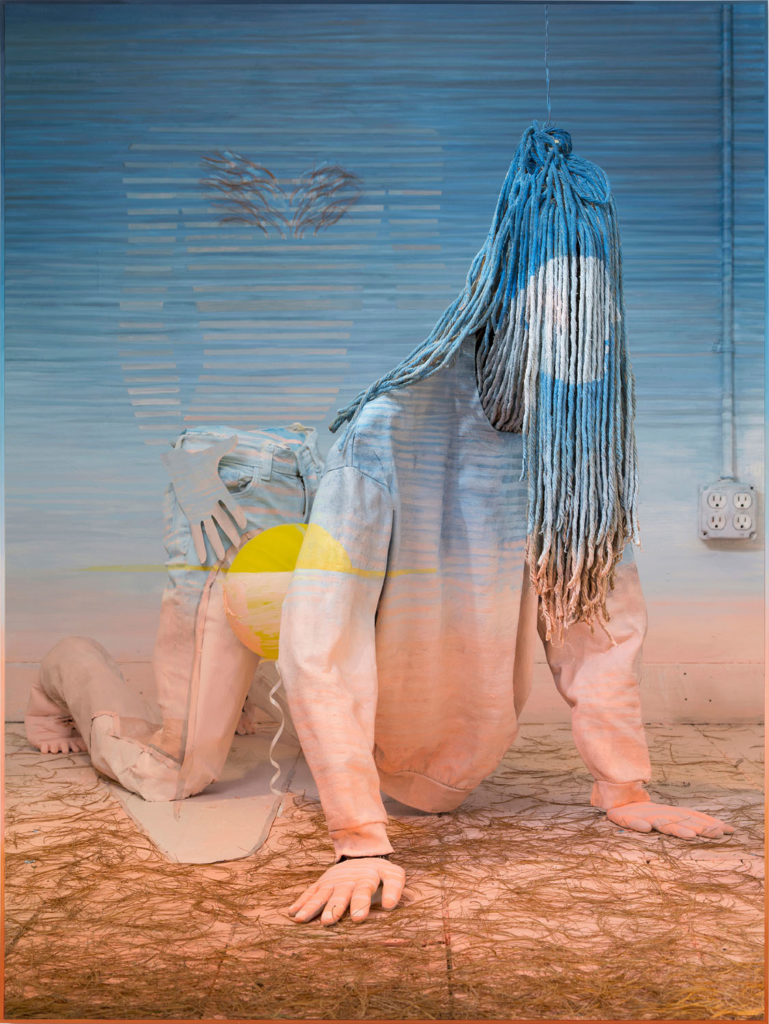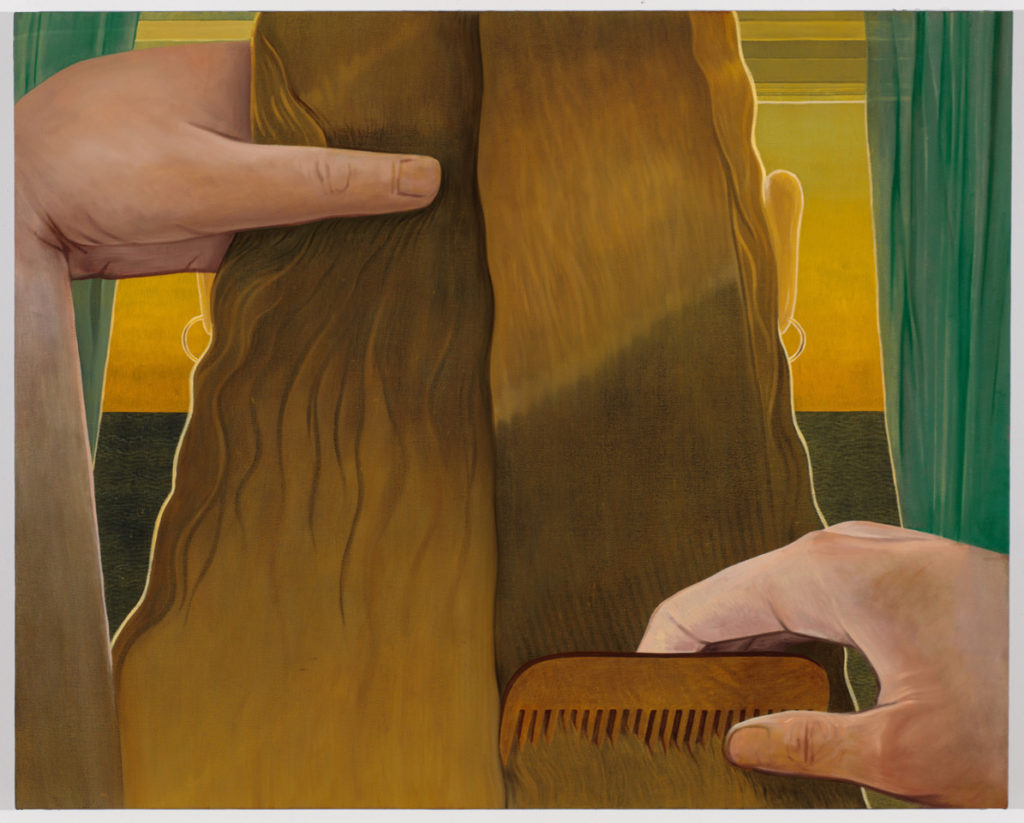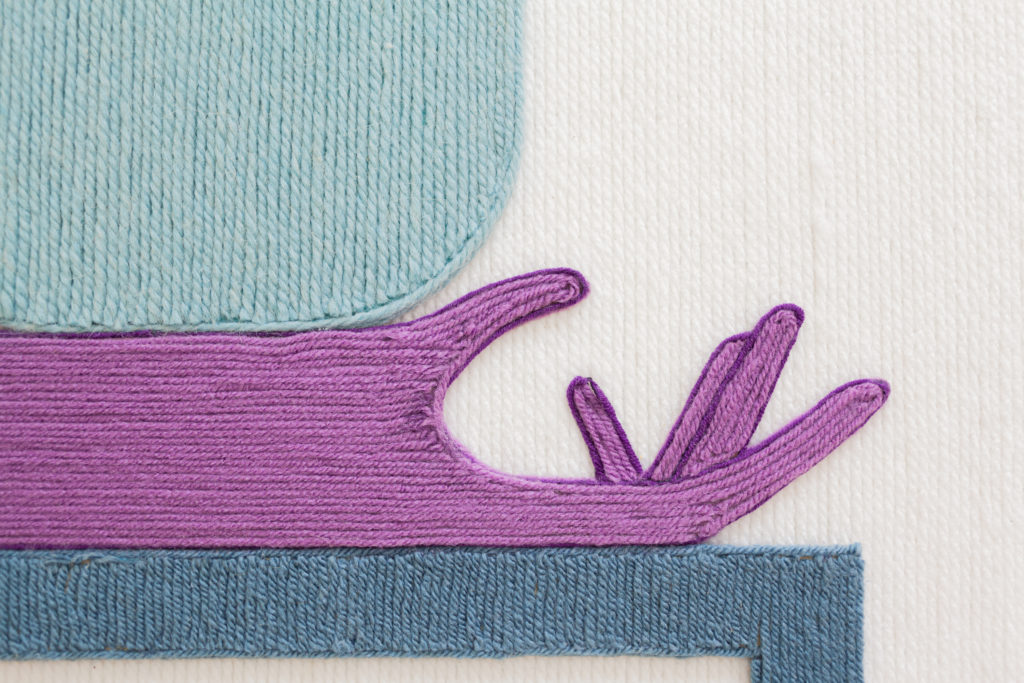Roommates: Shulamit Nazarian Los Angeles
by Celia Glastris
Los Angeles gallery Shulamit Nazarian’s summer group show breathes life into the everyday object of the home. The title, Roommates, is a double-entendre that both establishes the plurality of artists on display as well as the things that, through symbolic meaning and sentimental value, develop identities and humanlike residence in our lives. Just like a voyeuristic peruse through someone’s home, these works reveal stories and portraits of each artist. While at first glance it may seem like your typical fun and lighthearted group show, Roommates offers a deeper meditation on the history of the art object itself and modes of creation.

At the exhibition’s opening, featured artist Rachel Granofsky explained she had researched blog forums for people who claimed to be addicted to having sex with ghosts for her suitably monikered photograph, Ghost Sex (2015). She compared this fetish to making art alone in one’s studio. Even though Granofsky works solo, her inner voice acts as a production partner. Ghost Sex is a part of a series on the process of creation—illuminating why she is so interested in this subject. Her tableau-style photographs take several months to create and are meticulously crafted out of everyday materials; they then live a short and ephemeral life memorialized by her camera. Once she is satisfied with the image, they are taken apart. Additionally on display is her Madonna and Child (2015). While polar opposite in prudence, the biblical photograph also depicts a form of conception with a (holy) ghost. Mary caresses her son, modeled with bits of clay, a tuft of hair, and various fabrics. She also holds a hot glue gun. If Mary’s immaculate conception is her child, then Granofsky’s is her photograph.
Roommates features a stylistic evolution of Michael Stamm. With works on display ranging from 2015 to 2019, his earlier paintings depicted flat portraits that capture moments of gentle intimacy and also disconnect. For example, an earlier work entitled Combing (2015), oscillates between tenderness and longing, as one person combs another’s long blonde hair. The gallery’s Director of Sales, Mélanie Faure, described how this portrait displays the point of view of both characters, allowing the viewer to experience the dual realities and experiences within the scenario.
Stamm’s most recent pieces create surreal, figurative illusions through compositions of objects void of any ‘real’ corporeal humans on the canvas, which pair well with Granofsky’s tableaus. This new abstracted approach offers Stamm a more focused and expansive semiotic language to explore emotions, loneliness, and relationships. Thematically similar to his 2015 painting Combing, Tincture #16 (Ambivert) (2019) explores the multiplicity of identity; this time condensed into one character. As a means of a quick refresher on two seldomly employed words: a tincture is a sort of distilled essence, which seems like the perfect definition for his new visual approach, while also aptly referring to the mysterious layers of medicinal vessels. An ambivert is someone who alternates between having the personality of an introvert or an extrovert. Stamm portrays two expressions through a feather that forms the contour of a smile, overlaid atop a worried frown. Perhaps this painting condensed the feelings of both characters of Combing in a much looser interpretation than the 2015 painting. Regardless, this mysterious but legible direction is an exciting new approach for the artist.

Woody De Othello’s contribution to the show realizes his synesthetic vision of animated object-characters through the anthropomorphic nature of clay. The artist creates living beings out of banal household staples in a not-quite-Hephaestion conception; the weighty slabs of clay have a life of their own that decide an autonomous personality beyond De Othello’s control. The artist solidifies their temperament through titles like Doing Well (2017) and often gives his object’s arms to hold themselves. By the way, they really do look alive. The clay’s fleshy material combined with the trompe de’loeil’s original function activate a mind-body circuit. The stool stands in Doing Well, it supports the plants that sit atop their friend. Not to mention that Shirt Shade Grey (2019) literally lights up the room. In regards to the curation, De Othello’s ceramic sculptures are a necessary contribution to the show that tie in the pervasive history of the clay creation myth, prevalent in innumerable cultures throughout the world. Without an homage to this lineage, Roommates would feel fragmented.
Chris Bogia is the fourth and final artist in Roommates, with the most interesting component of his work being the eclectic medium choices that unfold throughout the space. Rather than subject matter, the real compelling response from Bogia’s works, in regard to the ‘living object’ theme, was acknowledging the active political potential of media by pairing materials that historically clash. Presented in a tighter front hallway are three watercolors that depict graphic interiors with a high attention to composition balance. These attractive and palatable works on paper perhaps misguide the viewer’s expectation for the rest of Bogia’s work on display. In the entry of the main space is a larger version of the watercolor compositions, this time translated into a yarn-on wood wall work. Bogia’s oeuvre transforms into an active tense: the three works on paper now like proposals for larger works that ask what these renderings could be. Not to mention that they now reference the functional language of interior design and architectural blueprints. Faure detailed that the artist was interested in using materials that he could find in a craft store. The longstanding feminine stereotype of craft contrasts against the hypermasculine history of painting in Archway IV (2019) and of High Minimalism’s, finish-fetish in The Canyon Fantasy (2019)

In a sense, all art gives life to an object. Thus, in some ways, Roommates is a meditation on art itself. It is nice to take a step back and be reminded of the essence of making. Roommates does not offer that calm, rush of clarity right away. The works are more so caricatures that distill the complexity of art into a cartoon program. At first they are fun and entertaining, but when one gives them time they reveal stories of the creative process, lessons in art history, and deep reflections on what it means to ‘create.’ The curation brings out the absurdity in each artist’s work, giving the space an upbeat and amusing energy. Enjoy this stimulating feeling, then slow down and meet the makers behind these living objects.
Roommates runs at Shulamit Nazarian, Los Angeles, until August 30, 2019.